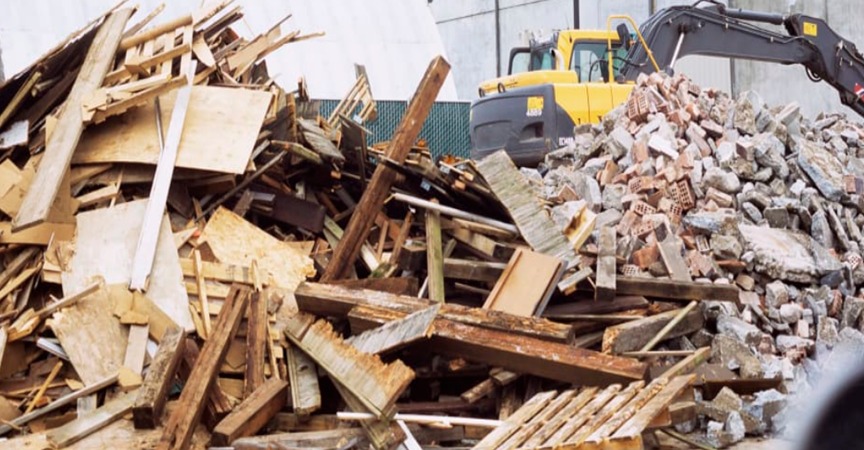

Construction and demolition activities produce significant amounts of waste materials each year, making this sector a major contributor to waste generation globally. Each year, the construction and demolition sector across the globe produces an estimated 1.3 billion tonnes of waste. Most waste materials were not recycled and disposed of in landfills or burned in factories that convert waste into energy. Concrete, bricks and glasses are some of the materials that are not recyclable and make up a part of building and demolition debris. Nonetheless, these materials could have significant positive impacts when reused in construction projects. Incorporating recycled concrete, bricks and glasses as primary components in chip seal pavements is an efficient method for recycling and reusing these materials.
Chip seal (also called a seal coat or surface dressing) has been a popular surface treatment in Malaysia in recent years. It is a single layer of asphalt binder covered by embedded aggregate (one stone thick), and its primary purpose is to seal the fine cracks in the underlying pavement surface and prevent water intrusion into the base and subgrade. The aggregates protect the asphalt layer from damage and develop a macro texture to provide a skid-resistant road surface for vehicles. Chip seals are a pavement maintenance method for correcting or preventing problems on roads and other surfaces.
One benefit of chip seals is they offer solutions for functional road pavement issues at more than 30% cost savings. They simplify construction, have a higher work output per day and allow work to be completed quicker, and, therefore, cause less traffic disruption during construction. Because chip seals are durable, they ensure that the roads are safer and more durable, have good skid resistance and road surface drainage and have better surface texture. The main advantage of chip seals is a longer pavement life of up to five years and low annual maintenance costs. It is possible to develop environmentally friendly and cost-effective road surfaces by recycling waste materials from construction and demolition into chip seals while extending the life span of road surfaces. This strategy is consistent with the core tenets of environmentally responsible waste management and responsible use of the available resources.
The main reason for applying chip sealant to asphalt roadways is to shield them from the degrading effects of the sun and rain. The asphalt in asphalt pavements will harden or oxidise when exposed to the elements (sun, wind, and water). As a result, it becomes fragile and develops cracks because it cannot bend and flex when exposed to the stresses of traffic and temperature variation. These problems can be remedied by applying a chip seal to create a watertight membrane over the pavement, which slows the oxidation process and helps the pavements shed water, thus preventing the water from penetrating the foundation material.
Another benefit of chip seals is the higher surface friction imparted by applying the cover aggregate to the pavements. With time, the fine materials in the asphalt pavement surface will disintegrate in a process known as ravelling. After enough fine materials have worn away from the pavement surface, the traffic moves primarily on the coarse aggregate. The smoothing and polishing effect experienced by aggregate particles causes the roadway to become slick, making it more difficult for vehicles to come to a sudden halt. Chip seals can improve pavement texture and friction characteristics.
The building and construction industry is responsible for most of the carbon dioxide emissions and consumption of natural resources. For example, cement manufacturing across the globe is responsible for a large amount of CO2 emissions. Previous research to identify and address the problems with CO2 emission problems have proposed incorporating supplementary cementitious materials like fly ash, silica fumes and recycled aggregates to reduce the use of natural resources in construction. This research aims to address the previously identified issues by reducing reliance on virgin resources and, thus, the environmental impacts associated with resource extractions by utilising recycled materials, such as concrete, bricks and glass, in the waste products generated in construction and demolition.
This research developed a chip seal comprising 100% aggregates from a cationic rapid-setting bitumen emulsion (CRS-2) combined with recycled concrete, bricks and glasses. The experiments to determine the material’s performance revealed that all construction and demolition waste materials exhibited satisfactory aggregate embedment, which indicates good performance when subjected to vehicle speeds greater than 70 kilometres per hour (km/h).
The percentage of chips dislodged from the chip seals was less than ten per cent, which proves their efficiency. The developed chip seals imparted the pavement with excellent skid resistance performance. Because of their unique chemical make-ups, the chip seals from recycled concrete and glass have the best adhesion on asphalt surfaces, even in extremely low temperatures. The study results showed that the recycled debris from buildings and demolition is the appropriate chip seal for pavements.
The study results also showed that sustainable waste and resource management presents problems and opportunities in managing the waste from building and demolition. Even though construction and demolition generate large volumes of waste materials, the durability of construction wastes and the hazardous components in construction materials make recycling more difficult. In addition, the shortage of sand and gravel due to the fast-paced urbanisation further underscores the necessity of utilising alternative materials in the construction industry.
Several studies have explored using construction and demolition waste materials, including chip seals, in different parts of pavement structures. The studies evaluated the mechanical properties of chip seals fabricated from construction and demolition waste aggregates through various tests to determine their feasibility and potential benefits in pavement structures. For example, mortar, ceramic and clay waste materials, including the aggregates from the waste generated during construction and demolition, were used as fine and coarse aggregates in concrete paving. Even though incorporating waste materials from construction and demolition increased the apparent porosity and water absorption of the concrete, it still fulfilled the requirements for minimal standards. Similarly, the research on using waste materials from construction and demolition, such as recycled concrete, to fabricate pervious concrete found that the enhanced hydraulic conductivity and compressive strength.
Researchers have also investigated the potential of using recycled glass as the base course material for chip sealing. Even though incorporating a high proportion of glass aggregates in the base course reduced its resilience modulus and shear strength, adding up to 25% recycled glass had no discernible impact on the mechanical properties of the base course. This result showed that recycled glass could be a feasible option for chip seal construction because it is a more environmentally friendly alternative than traditional materials. Other materials, including recovered asphalt pavement (RAP), recycled rubber, and waste from construction and demolition, have been added to hot-mix asphalt (HMA) to produce chip seals. These waste materials could improve skid resistance and other performance parameters of the HMA. However, it is essential to perform a complete analysis of the characteristics and constraints of each waste material to achieve the best outcome.
Sustainable management of construction and demolition materials stresses source reduction, salvaging and reusing materials, and recycling and rebuying recycled resources to address the identified issues. These activities are a part of the circular economy concept. Recycling construction and demolition materials, such as asphalt, concrete, wood and metals, can conserve landfill space and reduce the environmental impacts associated with the extraction and production of new materials. Implementing sustainable management will prevent the disposal of large volumes of waste material produced throughout the construction and demolition of structures. Rebuying used and recycled construction and demolition materials and products supports the local economy. It also reduces the overall construction costs and the demand for raw resources while driving the growth of a circular economy.
A green solution to the ever-increasing problem of waste materials from construction and demolition is the innovation of chip sealants for pavements fabricated from materials recovered from demolition and construction sites. Chip seals can be used to effectively recycle considerable quantities of waste materials and improve pavement performance and durability by incorporating the waste aggregates from building and demolition projects. Chip seals provide a cost-effective and versatile solution for preserving pavements while using waste materials from building and demolition supports environmentally responsible practices in resource management.
In conclusion, the waste materials generated in global construction and demolition activities bring opportunities and concerns. It is possible to build environmentally friendly and cost-effective road surfaces using recycled resources, such as recycled concrete, bricks and glasses, and employing them in chip seal pavements. In addition, sustainable waste management practices, such as source reduction, salvaging and recycling, can minimize the adverse impacts of the construction sector on the surrounding environment while conserving natural resources. It is pivotal to adopt these techniques to implement more environmentally friendly approaches in construction and reduce the amount of waste materials produced globally.
Penulis:

Siti Arinah Binti Sanat
Department of Polytechnic and Community College (JPPKK)
Ministry of Higher Education.

Dr. Ahmad Yusri Mohamad
Lecturer, Department of Civil Engineering
Politeknik Sultan Haji Ahmad Shah
(POLISAS), Pahang.

Prof. Madya Ts. Ir. Dr. Nur Izzi Md Yusoff
Lecturer, Department of Civil Engineering
Universiti Kebangsaan Malaysia (UKM), Selangor.